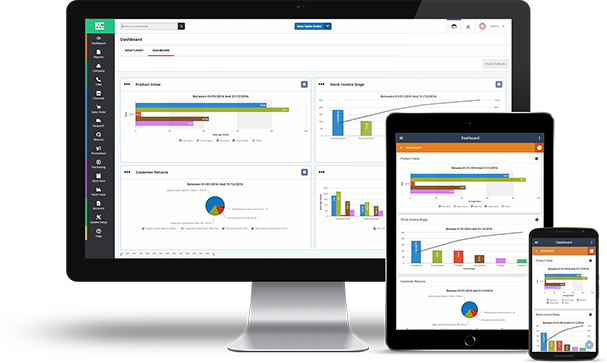When running a business, mistakes are inevitable. What is important is that we learn from such mistakes and improve our strategies and actions.
Some typical retailer mistakes often result in customer returns. Examples are sending the wrong items or products of minor quality, using insufficient packaging, or making false promises and raising unachievable expectations with the customer.
But as returns are a major cost factor that diminishes your profits, can you afford to make these mistakes over and over again?
Wouldn’t it be better to find out which mistakes you are making, learn from them and avoid them in the future, leading to lower return rates and happier customers?
It sure would! That’s why we’re going to show you how you to use Customer Returns Analysis to learn from previous returns and improve your business performance.
This is easiest if you have a cloud-based ERP solution in place that allows you to handle AND analyse customer returns from anywhere, at any time. Don’t have one yet? Try it now for free!
What is Customer Returns Analysis?

Essentially, Returns Analysis means collecting as much data about returns as possible, then analysing it, learning from it and taking action.
Let’s take an online retailer for sport accessories as an example. Two weeks after launching his new line, he is happy with the sales figures but has noticed an increasing amount of returns. So, he takes a look at the Returns report in his cloud-based ERP system.
There he sees that one item caused an unusually high number of returns: a sports bag. He then drills deeper and takes a look at the return reasons stated by the customers. He finds out that most customers who returned the bag stated that they didn’t like the size of the bag.
Our retailer then opens up the item on his ecommerce website and can suddenly understand why this item is returned more often than others: He forgot to add the additional images to the product pages, meaning that there is only one picture that shows the bag in front of a white background. But there is no picture that gives an idea of how big or small the bag is compared to a person.
Now, that’s an easy one to fix, especially as he already has the additional pictures taken and just forgot to upload them. After two weeks, our retailer checks his returns again and finds that the rate has decreased to a normal level.
This is of course a simplified example. But in principle, this is how returns analysis work. And if you have it integrated with the rest of your business processes, like order management or inventory, it is even more powerful and allows you to make informed business decisions based on in-depth analysis.
Why Is Returns Analysis So Important?

For some retail businesses, ecommerce return rates up to 40% are a daily struggle. And these returns can severely impact your profits. Not only are returns reducing your sales, but they also cost you money in form of expenditures. Because even with a powerful returns management software, shipping and handling returns is never cheap.
Therefore, reducing your return rate can lead to a significantly healthier bottom line. Especially as reducing your return rate by 1% can increase your gross profits by 1.6% and your operating profits by up to 15%!
This is why in-depth return analysis is so important. Because if you don’t know where your returns come from and why they happen, it’s impossible to tackle them successfully.
How to Conduct Returns Analysis in Khaos Control Cloud
Analysing your returns in Khaos Control Cloud is simple.
As a first step, you will need to record a return reason when you handle a return in the system. This ensures you won’t miss that information later on.
The following explainer video shows you how to do that step by step:
If you then wish to analyse your returns, you can create a new dashboard report for returns. Simply tick the appropriate checkboxes you require and the dashboard will show you the relevant information. You can create as many reports as you need.
You can then also dig deeper and take a look at each individual return and the previously recorded return reasons.
This functionality for detailed returns analysis, combined with excellent returns management tools that help you increase customer satisfaction, makes Khaos Control Cloud the ideal solution to reduce returns and power your ecommerce business.


